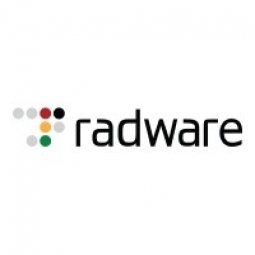Download PDF
Hexatom Stops DDoS, SSL and WAF-Based Attacks, Creates New Revenue Stream with Radware’s AMS
Technology Category
- Infrastructure as a Service (IaaS) - Cloud Computing
Applicable Industries
- Telecommunications
Applicable Functions
- Business Operation
Use Cases
- Cybersecurity
Services
- System Integration
The Challenge
In June 2015, Hexatom, a leading Infrastructure as a Service (IaaS) Managed Service Provider (MSP) in France, took on a new client in the gaming industry and experienced its first major attack. The attack significantly affected not only the gaming company targeted, but also neighboring clients in the data center. Equipped with only a rate-based solution provided by its carriers, Hexatom needed an in-house, comprehensive and automated attack mitigation solution to protect its infrastructure and ensure such an incident did not happen again.
About The Customer
Headquartered in Vélizy, Hexatom is France’s leading Infrastructure as a Service (IaaS) Managed Service Provider (MSP) offering a wide range of services from colocation and managed hosting services to storage, backup and disaster recovery and virtualization. In June 2015, Hexatom took on a new client in the gaming industry and experienced its first major attack. This attack significantly affected not only the gaming company targeted, but also neighboring clients in the data center. In order to protect its infrastructures and ensure this did not happen again, Hexatom needed an in-house, comprehensive and automated attack mitigation solution.
The Solution
Hexatom searched for an on-premise solution that could complement the protection that was already in place with its carriers. Radware’s Attack Mitigation System (AMS) was chosen for its patent protected behavioral based real-time signatures technology that accurately detects and mitigates emerging network attacks all without the need for human intervention and without blocking legitimate user traffic. The AMS also includes a centralized attack management, monitoring and reporting solution that provides real-time identification, and response to these attacks. Its unique detection and mitigation capabilities provided comprehensive protection and eliminated downtime for customers.
Operational Impact
Related Case Studies.

Case Study
Vodafone Hosted On AWS
Vodafone found that traffic for the applications peak during the four-month period when the international cricket season is at its height in Australia. During the 2011/2012 cricket season, 700,000 consumers downloaded the Cricket Live Australia application. Vodafone needed to be able to meet customer demand, but didn’t want to invest in additional resources that would be underutilized during cricket’s off-season.

Case Study
SKT, Construction of Smart Office Environment
SK T-Tower is the headquarters of SK Telecom. Inside the building, different types of mobile devices, such as laptops, smartphones and tablets, are in use, and with the increase in WLAN traffic and the use of quality multimedia data, the volume of wireless data sees an explosive growth. Users want limitless Internet access in various places in addition to designated areas.









